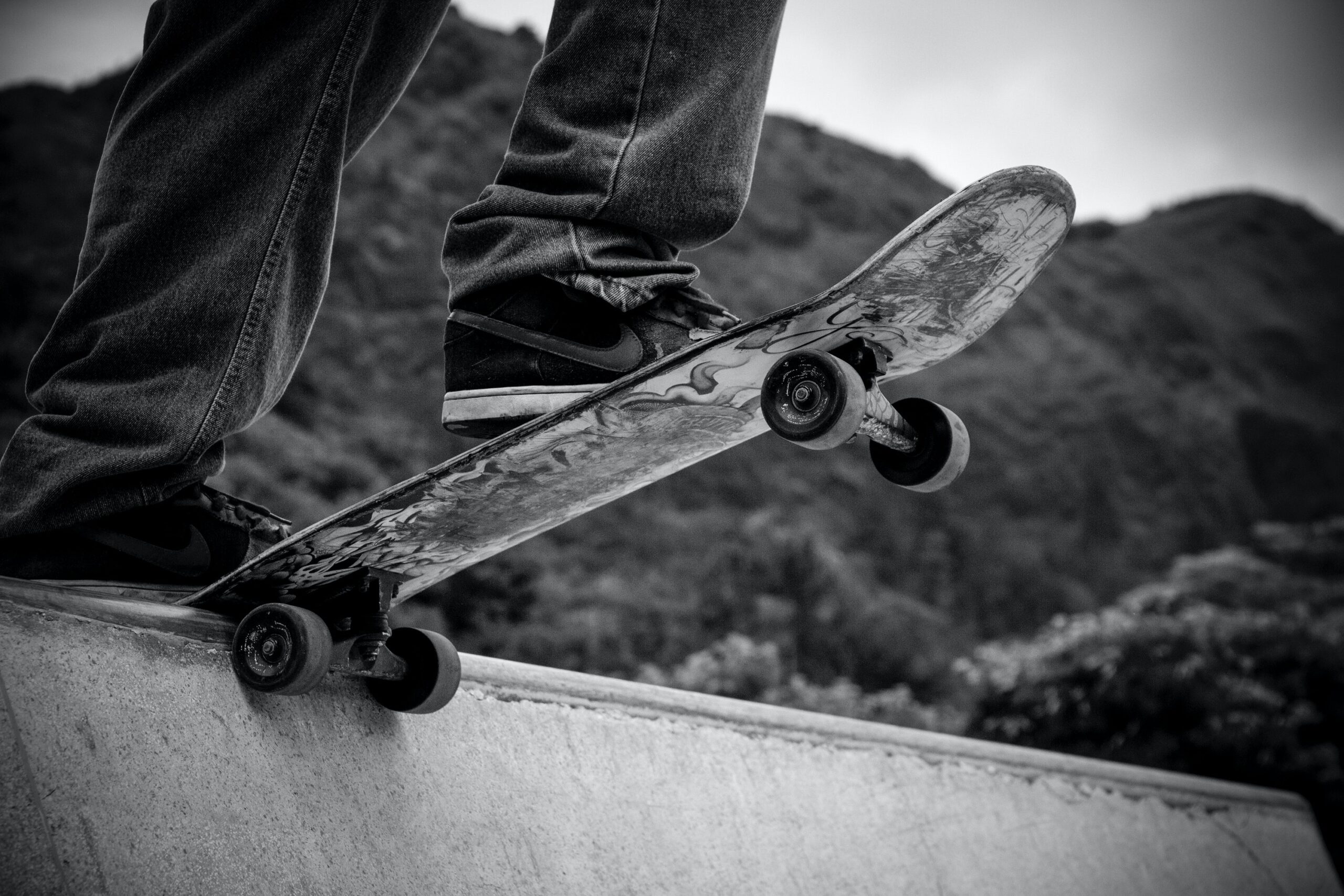Are you itching to jump on a skateboard and conquer the streets with your tricks?
Well, let me assure you, learning to skateboard is an exhilarating journey that can be both challenging and rewarding.
From mastering basic skills to conquering advanced tricks, skateboarding requires dedication, persistence, and a fearless spirit.
But don’t worry. With the right guidance and practice, you’ll be shredding like a pro in no time.
So, lace up your sneakers, grab your board, and let’s dive into the wonderful world of skateboarding!
Factors Influencing Skateboarding Difficulty
The following influence skateboarding difficulty.
Age
As you grow older, the impact of age on your ability to learn skateboarding becomes more evident. While age isn’t a definitive barrier to learning skateboarding, it can affect the process in several ways. Here are some key points to consider:
- Physical limitations: As you age, your body may become less flexible and more prone to injuries. This can make it harder to perform certain skateboarding tricks and maneuvers.
- Fear and risk aversion: With age comes a greater awareness of the potential dangers involved in skateboarding. This can lead to increased fear and hesitation, making overcoming mental barriers and trying new things more difficult.
- Learning curve: Skateboarding requires a certain level of balance, coordination, and muscle memory. Younger individuals tend to have a faster learning curve and may pick up new skills more quickly than older individuals.
While age can present some challenges, it’s important to remember that skateboarding is a sport that can be enjoyed by people of all ages. With dedication, practice, and a positive mindset, you can overcome these obstacles and continue to progress in your skateboarding journey.
Physical and mental aspects of skateboarding
Skateboarding requires a certain level of physical and mental effort to overcome the various factors that influence its difficulty.
When it comes to physical fitness, skateboarding demands strength, endurance, and flexibility. You need to develop a sense of balance to maintain stability on the board while performing tricks and manoeuvres.
Mental aspects also play a crucial role in skateboarding. Creativity is key as it allows you to explore different ways of approaching obstacles and tricks. Individuality is celebrated in skateboarding culture, encouraging you to express yourself and develop your own style.
Being part of the skateboarding community fosters a sense of belonging, as you connect with fellow skateboarders who share the same passion.
Embrace the physical and mental aspects of skateboarding, and you’ll find yourself immersed in a culture that celebrates creativity, individuality, and belonging.
Fear of Failure
Overcoming the fear of failure can be a major factor in determining the difficulty of learning skateboarding. It’s natural to fear falling and getting hurt, especially for beginners. However, it’s important to remember that falling is a part of the learning process.
Here are three factors that can influence the fear of failure in skateboarding:
- Lack of confidence: If you doubt your abilities and constantly worry about failing, it can hinder your progress. Building self-confidence through practice and small successes can help overcome this fear.
- Comparison to others: Comparing yourself to more experienced skaters can be intimidating. Remember that everyone starts as a beginner and progress takes time. Focus on your own journey and celebrate your achievements.
- Pressure to perform tricks: Trying to learn advanced tricks before mastering the basics can increase the fear of failure. Take your time, practice the fundamentals, and gradually work your way up to more challenging tricks.
Lack of Patience
Don’t let impatience hinder your progress in learning skateboarding. Patience is crucial when it comes to mastering this sport. Skateboarding can be hard to learn, especially when you’re eager to progress quickly. But remember, Rome wasn’t built in a day, and neither will your skateboarding skills. It takes time, practice, and, most importantly, patience.
To emphasize the importance of patience, here’s a table showcasing the relationship between patience and skateboarding difficulty:
As you can see, impatience can make skateboarding harder, while patience can make it easier. By taking your time, not rushing, and embracing the learning process, you’ll see better progress and improvement in your skateboarding skills. So remember, be patient, enjoy the journey, and soon enough, you’ll be shredding like a pro.
Basic Skateboarding Skills
Here are the basic skateboarding skills to learn first.
Learning to stand on the skateboard
To start learning to stand on the skateboard, you need to focus on getting comfortable with balancing on the board and staying on it. Here are a few tips to help you get started:
- Plant your feet shoulder-width apart on the skateboard, with your toes angled slightly outward.
- Bend your knees slightly to maintain balance and absorb any shocks or vibrations.
- Keep your weight centered over the board and distribute it evenly between both feet.
Learning to stand on a skateboard may seem challenging initially, but with practice and perseverance, it will become easier. It’s important to remember that skateboarding is a skill that takes time to develop, and even experienced skateboarders still work on their balance and stance.
Don’t be discouraged if it feels difficult at first – every skateboarder has been in your shoes.
Keep practicing, and soon you’ll find your balance and be ready to move on to the next skill.
Mastering the art of pushing off
To master the art of pushing off, you must develop a strong and controlled motion using your foot and leg. Pushing is an essential skill in skateboarding as it propels you forward and helps maintain your momentum.
To start, place your front foot on the skateboard, angled slightly towards the front of the board. Your back foot should be on the ground, ready to push off. Bend your knees slightly, and as you shift your weight onto your back foot, use a sweeping motion to push off the ground.
As you push, extend your leg fully and transfer your weight onto your front foot. Practice this motion repeatedly to build strength and control. Remember to keep your body balanced and aligned to maintain stability while pushing.
With practice, you’ll become more comfortable and efficient in pushing off, making it an effortless part of your skateboarding journey.
Developing balance and control
Building a strong foundation of stability and coordination is important as you develop balance and control while skateboarding. This will help you stay on your board and improve your overall performance and safety.
Here are three key tips to help you develop your balance and control:
- Practice riding in a straight line: Start by finding a smooth, flat surface and simply ride in a straight line. This will help you get comfortable with the motion of balancing on your skateboard and build your confidence.
- Work on your stance: Find a comfortable stance that works best for you, whether regular or goofy. Your front foot should be positioned perpendicular to the length of the board, while your back foot should be angled slightly. Experiment with different foot positions to find what feels most natural.
- Use the right equipment: Invest in a good quality skateboard and skate shoes that provide proper grip and support. Having the right equipment will significantly improve your ability to maintain balance and control while skateboarding.
Falling and safety tips
Remember to prioritise your safety when skateboarding by learning how to fall properly and following these essential tips. Falling is a natural part of skateboarding, but with the right techniques and safety precautions, you can minimize the risk of injury. Here are some safety tips to keep in mind:
- Wear protective gear: Invest in a good quality skateboard helmet, knee pads, elbow pads, and wrist guards. These will protect you from serious injuries and give you the confidence to try new tricks.
- Learn how to fall: When you feel yourself losing balance, try to roll with the fall instead of resisting it. Tuck your arms in and try to land on the fleshy parts of your body to absorb the impact.
- Practice falling on grass or soft surfaces: Start by practicing falling on grass or other soft surfaces to get a feel for how to roll and distribute your weight.
- Take it slow and build your skills: Don’t rush into trying advanced tricks before mastering the basics. Progress at your own pace and gradually challenge yourself as you gain confidence and skill.
Injuries in Skateboarding
Skateboarding can be thrilling and exhilarating, but it comes with some risks. Injuries are common in skateboarding, with the risk of falls and collisions leading to emergency department visits.
However, there are steps you can take to skateboard safely and minimize the chances of getting injured.
The risk of injuries and emergency department visits
Be aware that injuries are a common risk when skateboarding, and emergency department visits may be necessary to treat them. Skateboarding is an exhilarating sport that can provide a sense of freedom and accomplishment, but it also comes with its fair share of risks.
Here are some important points to consider regarding injuries in skateboarding:
- Skateboarding can lead to various types of injuries, including sprains, fractures, concussions, and abrasions.
- The risk of injuries can be minimized by wearing proper protective gear, such as a helmet, knee pads, elbow pads, and wrist guards.
- Emergency department visits may be necessary for more severe injuries that require immediate medical attention, such as head injuries or broken bones.
Remember to prioritize your safety when skateboarding and always wear the appropriate protective gear to minimize the risk of injuries. It’s better to be cautious and prevent accidents than to end up in the emergency department.
Tips for skateboarding safely
To ensure your safety while skateboarding, following these tips for preventing injuries is crucial.
Skateboarding can be hard, but with the right precautions, you can minimize the risk of accidents and enjoy the sport safely.
First and foremost, always wear protective gear such as a helmet, knee pads, and elbow pads. These will provide essential protection in case of falls or collisions.
Skating in designated areas is also important, away from traffic and pedestrians. Be aware of your surroundings and always yield to others.
Additionally, start with the basics and gradually progress to more advanced tricks as your skills improve. Practicing on smooth surfaces and avoiding wet or slick conditions will also help prevent slips and falls.
Lastly, listen to your body and take breaks when needed. Skateboarding can be physically demanding, so it’s important to rest and recover to avoid fatigue-related injuries.
Motivation and Persistence
When it comes to skateboarding, motivation and persistence play crucial roles in your progress.
Factors such as seeing improvement, gaining confidence, and the desire to learn new tricks can keep you motivated to overcome difficulties.
Persistence is key in skill development, as it takes time and practice to master skateboarding.
Factors that motivate skateboarders to overcome difficulties
Skateboarders often find their passion for the sport to be a powerful driving force in overcoming their challenges. It’s this motivation that pushes them to persist and improve their skills.
Here are three factors that motivate skateboarders to overcome difficulties:
- Sense of belonging: Skateboarding isn’t just a sport; it’s a subculture that fosters a sense of belonging and community. Skateboarders often find support and encouragement from their peers, which motivates them to keep going and push their limits.
- Personal growth: Skateboarding requires dedication and perseverance. Overcoming difficulties and learning new tricks gives skateboarders a sense of accomplishment and personal growth. The feeling of progress and improvement fuels their motivation to overcome further challenges.
- Love for the sport: Skateboarders have a deep love and passion for skateboarding. They’re driven by their desire to express themselves creatively and freely through the sport. This love for skateboarding fuels their motivation to overcome difficulties and continue pushing the boundaries of what they can achieve.
With these motivating factors, skateboarders are able to overcome the difficulties they encounter in their skateboarding journey, and find fulfillment in the process.
The importance of persistence in skill development
Skateboarding can be hard, and there’s no denying that. But with a comprehensive guide and a determined mindset, you can overcome the challenges and become a skilled skateboarder.
Learning any new skill takes time and effort, and skateboarding is no exception. It’s important to remember that you won’t become a pro overnight. It’s a process that requires persistence and dedication. You may fall countless times, but it’s crucial to get back up and keep going. With each fall, you learn valuable lessons and gain experience.
Is Skateboarding Hard | Wrapping Up
By understanding the challenges and dedicating yourself to consistent practice, you can overcome the difficulties of learning skateboarding and ultimately become a skilled skater.
As we wrap up this comprehensive guide on learning skateboarding, here are three key takeaways to keep in mind:
- Patience is key: Learning skateboarding takes time and perseverance. It’s important to be patient with yourself and not get discouraged if progress feels slow. Remember, every skater started as a beginner.
- Practice makes perfect: Consistent practice is essential to improving your skateboarding skills. Set aside regular practice sessions and focus on mastering the basics before moving on to more advanced tricks. Repetition is key to building muscle memory and gaining confidence on the board.
- Embrace the journey: Skateboarding isn’t just about landing tricks, but also about enjoying the process. Embrace the challenges, the falls, and the small victories along the way. Remember that skateboarding is a form of self-expression and a way to connect with a vibrant community of like-minded individuals.
Can Skateboarding Be a Career? Is it Possible to Make a Living on Your Board?





